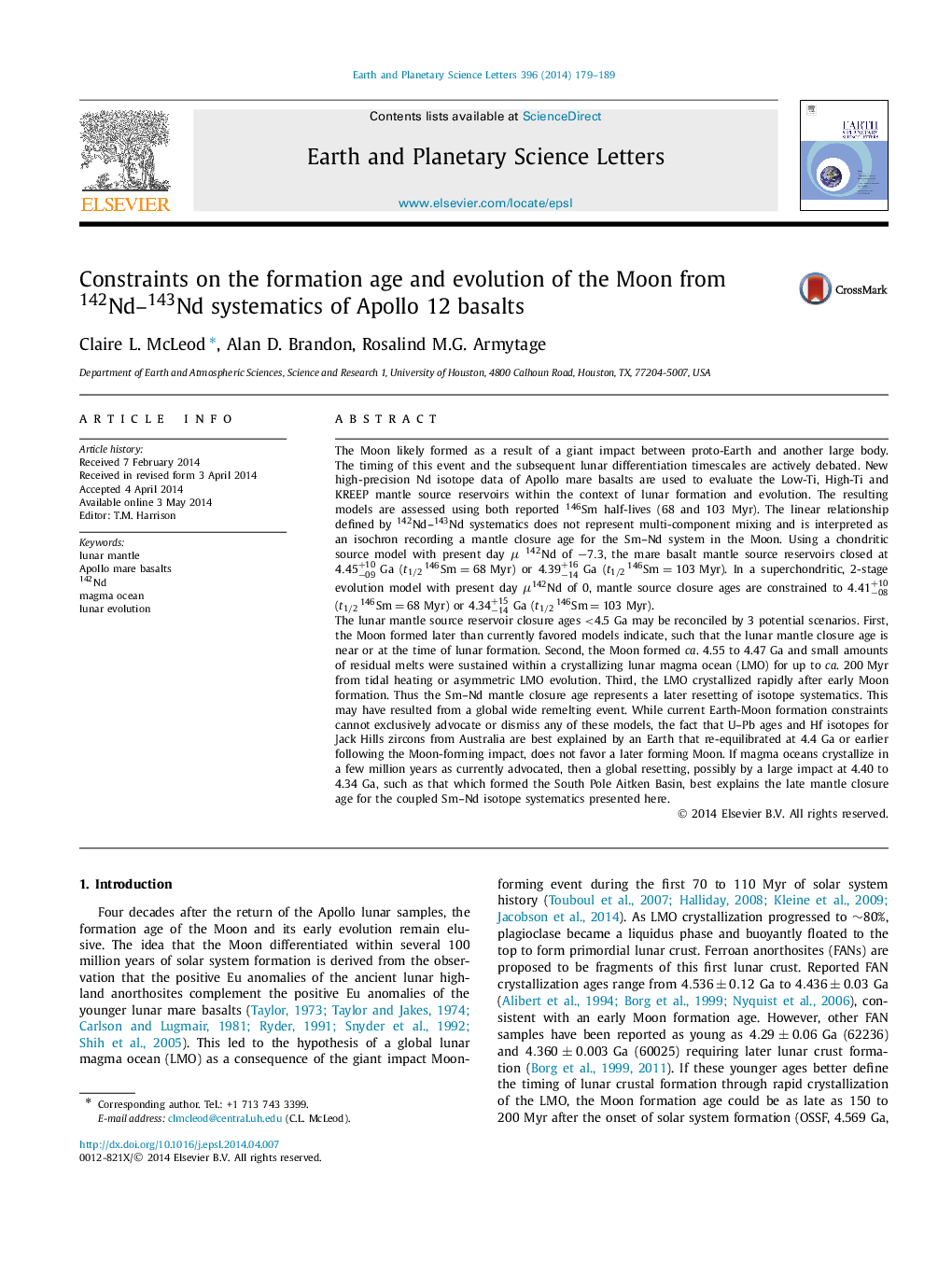| کد مقاله | کد نشریه | سال انتشار | مقاله انگلیسی | نسخه تمام متن |
|---|---|---|---|---|
| 6429547 | 1634760 | 2014 | 11 صفحه PDF | دانلود رایگان |

- High precision Nd isotope systematics of Apollo 12 mare basalts.
- Closure ages of lunar mantle source reservoirs for the Sm-Nd system.
- Evaluation of current models for early lunar evolution.
The Moon likely formed as a result of a giant impact between proto-Earth and another large body. The timing of this event and the subsequent lunar differentiation timescales are actively debated. New high-precision Nd isotope data of Apollo mare basalts are used to evaluate the Low-Ti, High-Ti and KREEP mantle source reservoirs within the context of lunar formation and evolution. The resulting models are assessed using both reported 146Sm half-lives (68 and 103 Myr). The linear relationship defined by 142Nd-143Nd systematics does not represent multi-component mixing and is interpreted as an isochron recording a mantle closure age for the Sm-Nd system in the Moon. Using a chondritic source model with present day μ 142Nd of â7.3, the mare basalt mantle source reservoirs closed at 4.45â09+10 Ga (t1/2Sm146=68 Myr) or 4.39â14+16 Ga (t1/2Sm146=103 Myr). In a superchondritic, 2-stage evolution model with present day μNd142 of 0, mantle source closure ages are constrained to 4.41â08+10 (t1/2Sm146=68 Myr) or 4.34â14+15 Ga (t1/2Sm146=103 Myr).The lunar mantle source reservoir closure ages <4.5 Ga may be reconciled by 3 potential scenarios. First, the Moon formed later than currently favored models indicate, such that the lunar mantle closure age is near or at the time of lunar formation. Second, the Moon formed ca. 4.55 to 4.47 Ga and small amounts of residual melts were sustained within a crystallizing lunar magma ocean (LMO) for up to ca. 200 Myr from tidal heating or asymmetric LMO evolution. Third, the LMO crystallized rapidly after early Moon formation. Thus the Sm-Nd mantle closure age represents a later resetting of isotope systematics. This may have resulted from a global wide remelting event. While current Earth-Moon formation constraints cannot exclusively advocate or dismiss any of these models, the fact that U-Pb ages and Hf isotopes for Jack Hills zircons from Australia are best explained by an Earth that re-equilibrated at 4.4 Ga or earlier following the Moon-forming impact, does not favor a later forming Moon. If magma oceans crystallize in a few million years as currently advocated, then a global resetting, possibly by a large impact at 4.40 to 4.34 Ga, such as that which formed the South Pole Aitken Basin, best explains the late mantle closure age for the coupled Sm-Nd isotope systematics presented here.
Journal: Earth and Planetary Science Letters - Volume 396, 15 June 2014, Pages 179-189